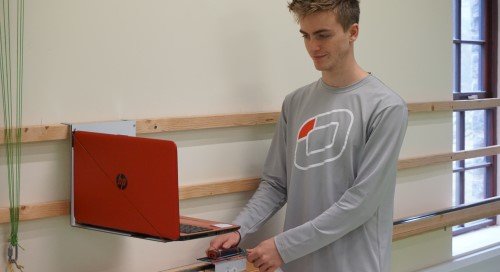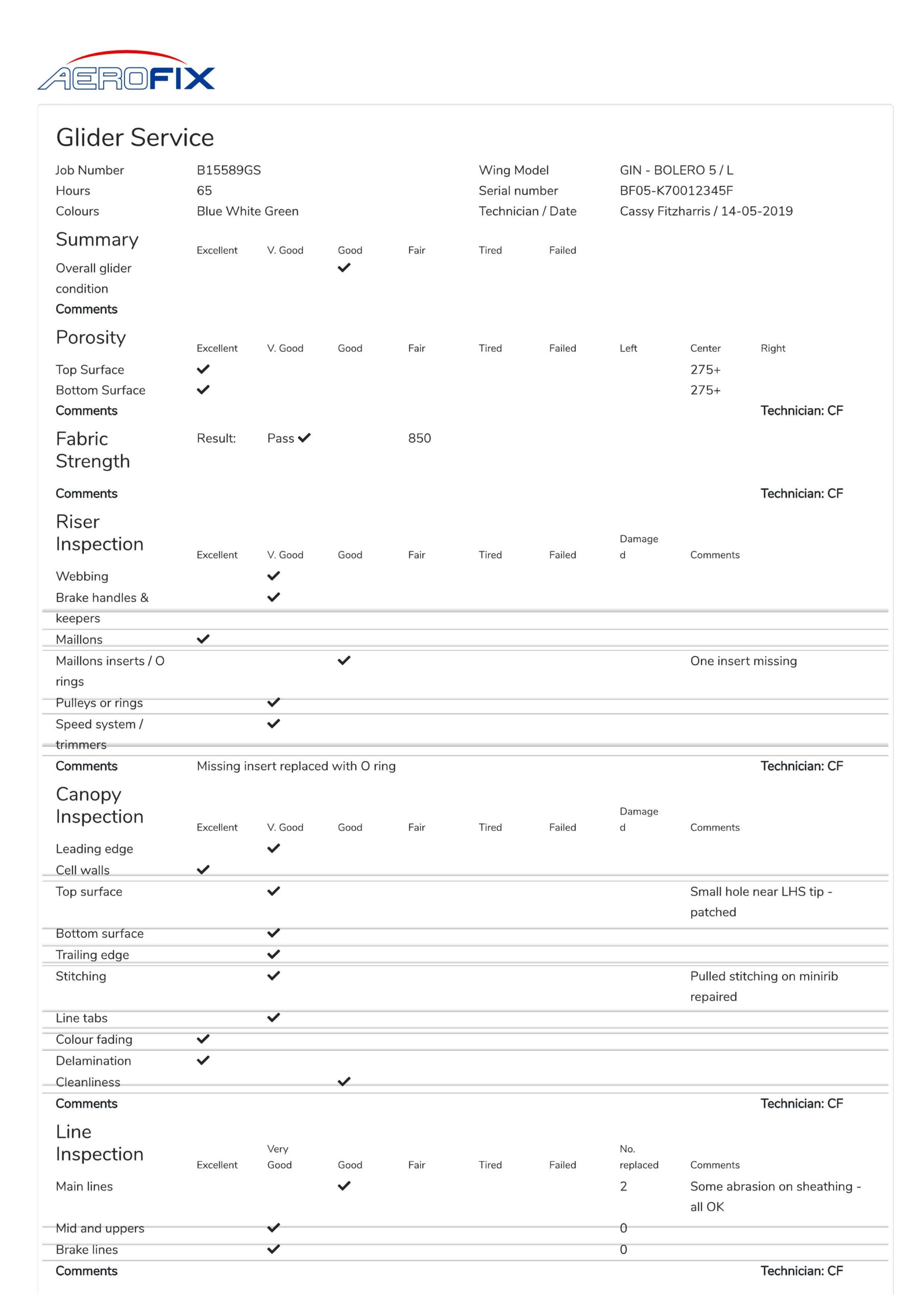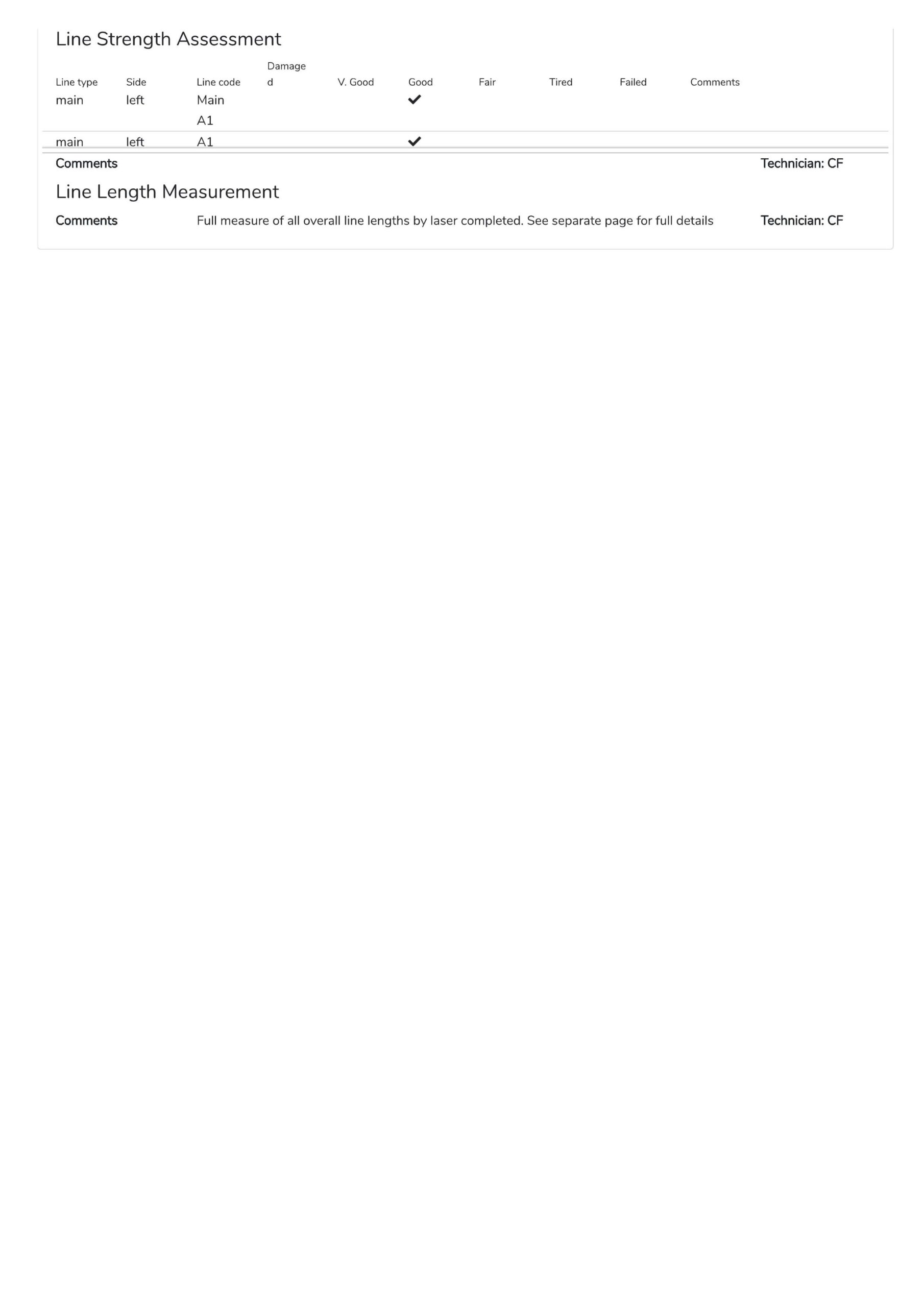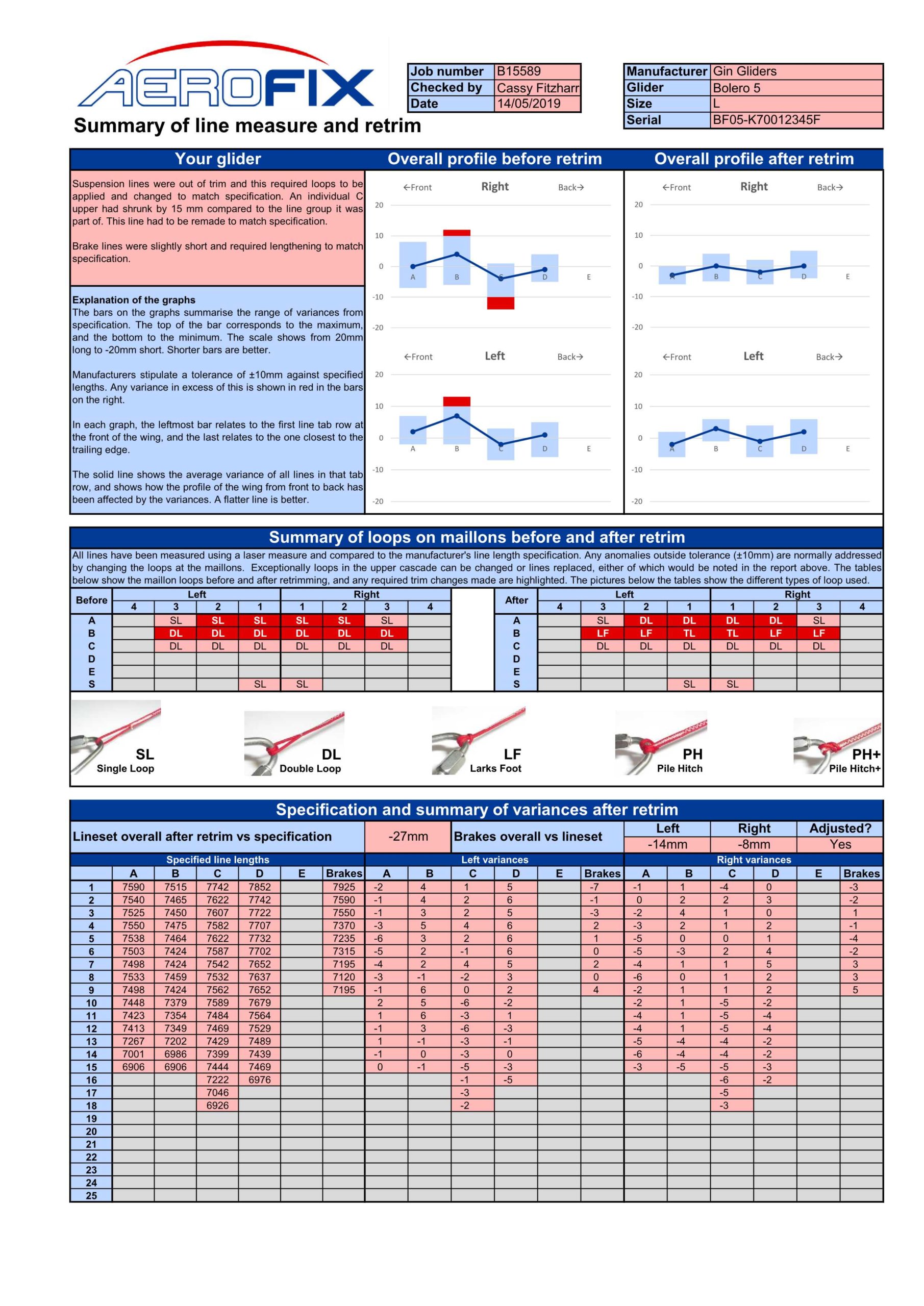Prices
Which glider service suits you?
What’s involved?
Technical
£135
- Tandem or paramotor wing £150
- All the technical tests required to confirm airworthiness and performance
- Pilot remains solely responsible for checking for physical damage
Full
£205
- Tandem or paramotor wing £235
- Comprehensive assurance that everything is as it should be
- Typically one full day of a qualified technicians time
Measure the length of all lines by laserAerofix Admin2019-02-19T22:00:48+00:00
We check your wing is in trim using a laser and software to compare actual line lengths against specification.
Assess line strengthAerofix Admin2018-12-23T10:36:29+00:00
Depending on the age of your wing, we may remove an upper and main line to test their breaking strength.
Test fabric porosityAerofix Admin2018-12-23T10:36:35+00:00
We check that the fabric of your wing will keep the internal pressure high enough to maintain normal resistance to collapse and parachutal tendencies.
Examine the condition of the canopyAerofix Admin2018-12-23T10:36:42+00:00
Hanging the glider up in the workshop allows us to examine the canopy really closely to find any damage.
Check over the risersAerofix Admin2018-12-23T10:36:48+00:00
We check the risers, maillons, brake handles and speed system are all as they should be.
Inspect lines for damageAerofix Admin2018-12-23T10:36:55+00:00
We examine every line carefully to check they are not damaged.
QR CodeAerofix Admin2020-10-24T14:17:10+00:00
Rapid access to the latest service report applied to the inside of your wing.
After completing your wing service, a unique QR code will be generated containing a link to the latest service report for your wing.
This is what the Technical Service covers
A Full Service also covers this
Example service reports
Technical Service
Full Service
Does a service involve any other charges?
Retrim work
Replacement lines
Repairs
How much does a repack cost?
What’s involved?
Round or square
£70
- Tandem reserve £80
- If you detach your reserve and send it to us in the deployment bag, the cost is £5 less.
Rogallo
£120
- Brake handles checked and reset
- If you detach your reserve and send it to us in the deployment bag, the cost is £5 less.
Check deploymentAerofix Admin2018-12-21T17:46:05+00:00
The first step is to carefully deploy the reserve and make sure everything works as it should:
-
Do the pins release easily?
-
Does the reserve come out without needing too much force?
-
Are the bridle and lines long enough to allow a good swing without the mouthlock releasing?
-
Do the lines slip out of the mouthlock easily?
-
Does the deployment bag fall off readily?
If we encounter difficulty at any stage, we fix it
Examine for damageAerofix Admin2018-12-21T17:52:04+00:00
Before hanging the reserve out to air, we carefully examine the lines and canopy to make sure there’s no evidence of damage or contamination. Reserves can inflate very sharply, creating a significant shock loading, so any signs of weakness are taken seriously. We also check the condition of the bridles, maillons, O rings, deployment bag and handle, and the harness compartment or front mounted container.
Air thoroughlyAerofix Admin2018-12-21T17:20:22+00:00
Layers of damp fabric can stick together, with the potential to delay the opening of the reserve. We hang the reserve up to air until it is thorougly dry before repacking
Repack carefullyAerofix Admin2018-12-21T17:14:07+00:00
Care is taken to follow the manufacturer’s instructions meticulously and reproduce the packing method used when the reserve was certified
ReinstallAerofix Admin2018-12-21T17:49:35+00:00
It’s vital that the reserve is compatible with the harness or front mounted container to ensure a swift and easy deployment. So we check to make sure that:
-
The reserve folds comfortably into the deployment bag
-
The lines slip out of the mouthlock easily
-
The bridles and maillons are in good condition
-
The bridle and lines are long enough to allow a good swing without the mouthlock releasing
-
The reserve comes out easily without needing too much force
-
The pins release readily
Other items
How much is the courier charge for collection and return?Aerofix Admin2020-10-24T14:46:51+00:00
We can arrange a collection to get your kit to the workshop, and there are two options:
-
Our courier can collect from your home or work address during working hours. This costs £25 for most UK mainland addresses for shipments up to 25kg
-
If you drop off your kit at one of the 2,500 DPD shops across the country (find one here), the cost is £15 for a box weighing up to 20kg
Return to you once the work is complete costs £20 for most UK mainland addresses for shipments up to 25kg
UK home or work address: collection and delivery charges
| Area | Weight limit (kg) | Timing | Collection | Return |
|---|---|---|---|---|
| Most of the UK | 25 | Next day | £25.00 | £20.00 |
| Highlands | 10 | Two days | £37.50 | £25.00 |
| Isle of Wight | 10 | Two days | £37.50 | £25.00 |
| Scottish islands | 10 | Two days | £44.50 | £27.25 |
| Isle of Man | 10 | Two days | £44.50 | £27.25 |
| Norther Ireland | 10 | Two days | £44.50 | £27.25 |
| Channel Isles | 10 | Two days | £44.50 | £27.25 |
Scottish Highland postcodes are AB36-38, AB55-56, FK17-21, IV1-39, IV52-54, IV63, KW1-14, PA21-40, PH19-26, PH30-41 and PH49-51
Scottish Islands postcodes are HS1-9, IV40-51, IV55-56, KA27-28, KW15-17, PA20, PA41-49, PA60-78, PH42-44 and ZE1-4
How much does a replacement line cost?Aerofix Admin2025-12-02T13:43:30+00:00
Replacement lines cost £16 each, with a few exceptions
A very small minority of lines are more expensive because of their material or construction. If this affects any line you order, we’d be in touch about the additional cost, and you’d be free to cancel your order for a full refund
Postage charges are as follows:
| Region | Up to 5 lines | Each extra line |
|---|---|---|
| UK | £3.85 | £0.75 |
| Europe | £12.50 | £1.00 |
| Rest of the world | £14.50 | £1.25 |
How much does an inspection for a repair cost?Aerofix Admin2019-05-02T07:28:37+00:00
We recommend an inspection to make sure all the damage has been identified
A thorough inspection of the fabric of the canopy costs £40. We can also carry out an inspection of the lines for an additional £30.
If you’re sending in a harness for repair, we can inspect that for £18.
How much does a logo cost?Aerofix Admin2019-01-04T16:01:16+00:00
The price reflects the time involved, which depends on the size and complexity of the design. The amount of artwork required to create an effective logo may also need to be taken into account.
If you’re prepared to fit the logo yourself, we can supply the logo and this will be less expensive.
How much will a repair cost?Aerofix Admin2019-01-03T13:30:17+00:00





